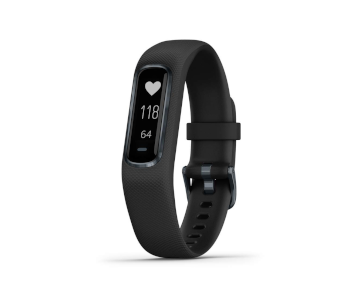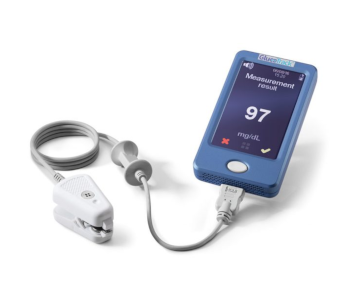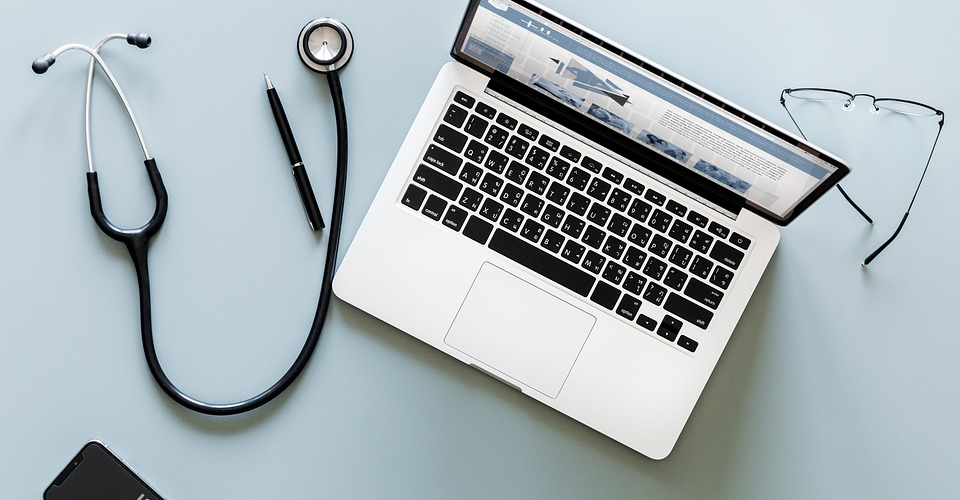The Benefits and Future of IoT in Healthcare
Long wait times, short examinations performed by overworked doctors, and exorbitant medical bills make many of us dread emergencies and doctor’s appointments. However, what if things could be different? What if you could wear a small device on your body that keeps track of your vitals and get in touch with your family doctor through video link moments after you need help or advice? This might sound like wishful thinking, but the Internet of Things is on a fast track to making streamlined, personalized healthcare the new norm.
This article examines how the Internet of Things is transforming healthcare. It takes a closer look at how introducing IoT into diagnosis and treatment helps both patients and medical professionals. You’ll find out how connected medical technology is already improving our lives and how the hospitals of tomorrow will function. Finally, we touch on the obstacles IoT needs to overcome to become a permanent staple of modern medicine.
What is IoT, and how does it apply to healthcare?
The Internet of Things or IoT refers to devices we use in our everyday lives which connect to the internet and share data through it. If you have a smart speaker, light bulb, or plug, you’re already using IoT in your home.
A growing subset of the IoT space is dedicated to connecting medical devices to the internet. This niche within IoT is referred to as Internet of Medical Things (IoMT) or Internet of Healthcare Things (IoHT), but we’ll keep using IoT in healthcare to avoid confusion.
Data gathering is the backbone of IoT in healthcare. The sensors, wearables, and traditional diagnostic devices that now have internet access all gather data which is then stored and analyzed. Medical professionals, caregivers, and patients have access to data that’s relevant to their role in the healing process. A Thing doesn’t need to be a sophisticated medical device either – simple motion sensors, beds, even pills can be classed as IoT devices if they share medically relevant data online.
IoT’s benefits for patients

The most significant benefit patients get out of IoT is constant monitoring. This allows both the physician and the patient to keep track of a condition and react to changes in time. Some monitoring devices can also send notifications and reminders to patients, helping them adhere to an exercise regimen or take their medication at regular intervals.
Smart glucose monitors are a real-life example that illustrates the benefits of monitoring and is already saving lives. These devices continuously measure a patient’s blood glucose levels. Real-time as well as historical data on their blood sugar can be accessed at any time through smartphones or tablets. The information is available locally to the patient but can also be viewed remotely by their doctor. The monitor sends push notifications when blood glucose levels exceed set parameters and can notify your doctor if they reach an alarming level.
Thanks to long-term data on their condition, patients can also make self-administered treatments more effective. Smart insulin pens that have access to a glucose monitor’s data can adapt the amount of dispensed insulin to suit the situation. They also keep records of how much medication was administered and when.
Sensors are even being built into pills, ensuring that patients are taking them regularly. A company called Proteus has developed a pill which produces a slight electrical signal once it dissolves in the digestive tract. This signal can be picked up by a tracking app and serves as a confirmation that the pill has been ingested. Proteus’ pill design is used in chemotherapy as well as the treatment of diabetes and hypertension with success.
Remote checkups and diagnostic tools which can send data to distant medical centers improve the quality of healthcare services and increase the likelihood of a treatment’s success for patients in remote areas. Islands, mountain towns that are cut off from the rest of the world come winter, or war-torn areas where it would be dangerous to send a medical team can now be reached and helped in this way.
Patients can leave hospitals sooner since they now have access to round-the-clock-monitoring from anywhere. Convalescing in a known and safe area speeds up recovery and makes patients feel more at ease. IoT devices designed for patient use are generally unobtrusive and small, so always wearing them doesn’t reduce the patient’s quality of life.
Greater independence is another important yet understated benefit of IoT. Thanks to home automation and AI assistants like Amazon Alexa, users can control the lights, check who’s at the front door, or adjust the temperature & humidity of their home without having to get up from bed.
Prevention is as important as treatment, and IoT devices play an increasingly important role in this field too. Fitness trackers are connected devices available to the general public which gather data on a person’s activity levels and overall health. This includes their heart rate, how many calories they burn when exercising, stress levels, sleep patterns, and more. Regular use of fitness trackers can motivate the individual to maintain and improve their health while also acting as an early warning system if their performance starts to suffer.
IoT’s benefits for doctors and caregivers

Medical staff that takes advantage of IoT has continuous access to a patient’s complete and up-to-date medical history. This allows doctors to make informed decisions when recommending treatments and helps caretakers develop optimized care schedules. Constant monitoring also means that emergencies are detected instantly and medical professionals can intervene in time.
Tracking a patient’s location and specific vitals can make a caretaker’s job easier. Patients with dementia are at risk of wandering off and getting lost, so knowing where they are speeds up retrieval and minimizes the risk of injury. Devices like bladder sensors tell the patient and caregiver when it’s advisable to go to the toilet and cut down on sanitary expenses while preserving the patient’s dignity.
Doctors and nurses are among the most overworked professionals, and introducing IoT into their workflow has an immediate positive effect on optimization. Medical histories and specific files can be located instantly, the steps needed to issue a prescription are simplified, and there’s much less paperwork to fill out since sensor and other devices record and catalog their findings on their own.
A doctor with less administrative overhead has more time for actual or remote contact with patients. There’s less need for doctor’s visits in the first place since routine irregularities can be interpreted & addressed by IoT devices themselves or a quick checking via a smartphone. When an appointment is warranted, the doctor has more time to talk to her patients, present treatment options based on an informed diagnosis, and offer reassurance on a personal level.
Data gathered by IoT devices is used to improve artificial intelligence in medicine. Access to vast quantities of information on a disease allows the AI to develop quicker and more accurate detection methods that aid doctors in their work. An AI-assisted diagnosis is faster and more reliable as the AI can spot the onset of a disease or identify problems a doctor would have dismissed as benign.
IoT is even starting to make an impact in the operating room. The greatest help surgeons currently get from it is data that shapes the way they operate. AIs exist that have access to millions of sorted examples of previous operations and comparisons of healthy and diseased tissues. They help the surgeon identify problematic areas with pinpoint accuracy and ensure the procedure is as targeted and noninvasive as possible. Robotic surgery is already used to perform routine operations. Once 5G becomes the norm, operators from hospitals hundreds of miles away will be able to supervise and take control of a robotic surgeon with minimal input lag.
Wide-scale IoT implementation has a positive impact on the advancement of medical science. The vast amounts of data give researchers an unprecedented sample of patients to work with. This cuts down research costs while providing data that’s both accurate and indicative of a condition as a whole. Coupled with increased processing power and more sophisticated programs, this leads to greater understanding and quicker breakthroughs.
The smart hospital
The smart hospital represents the culmination of IoT’s application in healthcare. Its vision is that of a facility which takes advantage of IoT to provide exceptional care to its patients while improving waiting times and optimizing long-term costs. While no single hospital in the world has implemented enough features to be categorized as smart yet, promising results in the testing of individual IoT application make this only a matter of time.
The patient will be at the heart of a smart hospital. Her condition will be monitored 24/7, her needs met as they arise, and her stay made as comfortable as possible thanks to smart rooms with voice-operated lights, entertainment, climate controls, and more. Patients and visitors in hospitals will never get lost as sensors placed around the facility will connect to their smartphones and guide them to where they wish to go. Interactive kiosks and virtual receptionists will help users reach a qualified professional faster as well as provide directions & information on the hospital.
A smart hospital’s administrators will have unprecedented amounts of information at their disposal. They’ll know where each piece of electronics is located and whether or not it is in use as even “dumb” machines will be upgraded with tracking chips. The same goes for medical staff and patients – tracking everyone in the hospital will allow the administration to locate any specialist in the case of emergencies and keep an eye on patients with dementia or other mental problems.
Implementing IoT solutions has the potential to save the hospital much money. Machines equipped with connected sensors can detect an increased risk of malfunctions before one even occurs and be repaired in time. Logistics automation and trend analysis will ensure that the hospital has enough medicine and materials on hand while eliminating unneeded surplus and decreasing fraud opportunities.
IoT will play a crucial role in the way drugs are handled. Digitizing the logistics process means less paperwork, timely deliveries, and no surplus of medicine which could go bad. An automated pharmacy will be able to dispense the exact amount of a prescribed drug to individual patients, so there will be no more dosage mix-ups or illegible drug names. Storage containers equipped with information chips will ensure that the medicine inside is genuine while also making it easier to dispose of a specific batch if it gets recalled.
The smart hospital will be a secure environment for both patients and staff. The sensors that monitor a patient’s health are already able to determine their stress levels. Further improvements will lead to a better assessment of risks associated with the patient’s behavior and provide the staff with more information on how much care they should approach a patient within a given situation. Matching pairs of tags for mothers and newborns will make baby theft and maternity ward mix-ups a thing of the past. Finally, a connected security system will speed up the identification and location of disturbances and allow hospital security to deal with threats more efficiently.
What are the challenges and risks of IoT in healthcare?
There can be no innovation without new obstacles to overcome, and these are becoming more apparent as the adoption of IoT in healthcare grows. The most severe problems the technology will have to deal with before being presentable as a universal solution are information bloat, standardization, costs, and security.
We’ve repeatedly mentioned how IoT devices create biometric and other data and why this is useful. On the other hand, much of the collected data is also useless; i.e., it shows patients’ stable phases or additional metrics not relevant to a particular condition. Useful or not, all this data needs to be stored and processed somewhere. This leads to a larger demand for cloud storage solutions and increases running costs.
Another side effect of information bloat is the adverse effect it can have on a doctor’s decisions. Having too much data to sift through leaves the doctor with less time to find and assess valuable information. The solution is to analyze the data as it comes in and transform it into relevant information a doctor can glance at and act on. However, this requires more processing power and further advances in artificial intelligence.
Today’s IoT devices connect to the world and each other through different means. Some use Bluetooth for short-range communication. Others connect to the internet through Wi-Fi. Both of these methods take up the same frequency space, which becomes saturated and unreliable once there are too many devices nearby. That’s why alternative connection protocols like Z-Wave and ZigBee were developed.
Problems arise when you’ve got multiple devices where each uses a different connection type. Z-Wave and ZigBee also can’t send their data over the internet without connecting to a hub first, making things even more confusing. IoT intended for use in healthcare will need to undergo a standardization process that will ensure all devices are interoperable and don’t put undue strain on the networks they access.
Advancements in production have made today’s microchips, sensors, and IoT devices in general cheaper and more accessible to the public. However, the real and substantial cost of IoT healthcare lies in building up its supporting infrastructure. Cloud storage, dedicated networks, user-friendly apps for individual solutions, as well as training stakeholders in how to use them all present a significant investment.
Information security is paramount for IoT to take off in healthcare. Medical records are among the most personal and vital information on any individual, and unauthorized access to them can cause considerable damage. If IoT is to be a viable long-term solution, both legislature and cyber security will need to guarantee the protection of an individual’s medical information.

